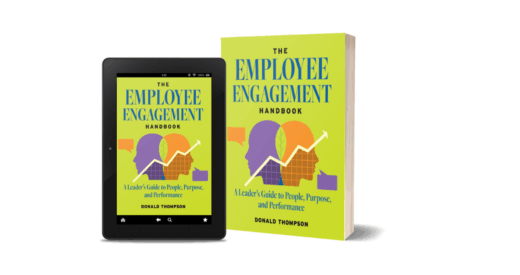This article is part of our focus on Mental Health Awareness Month in May. To continue the conversation, join us for a free webinar on Thursday, May 19, at 12 p.m. Eastern time. Register today for Wellness at Work: Building Resilience by Supporting Mental Health or watch the on-demand recorded event afterward.
More than two years ago, the coronavirus pandemic forced offices to close, and employees scrambled to figure out how to work from home. Today, companies are slowly opening their offices, but most workers aren’t returning – at least not full-time.
According to Pew Research, 59% of U.S. workers whose jobs can be done remotely are working from home all or most of the time. That compares with 23% of workers who worked from home before the coronavirus outbreak.
“The new culture is not defined by space. The new culture is defined by people,” says Greg Ng, CEO of Brooks Bell, a marketing research firm focused on enterprise-level testing, personalization and optimization services. “Maybe that’s the big myth that we were all supporting pre-pandemic? It’s never been the space. It’s always been about the people.”
The office environment might never be the same, and it’s up to leaders to ensure all employees – whether they are in the office or working remotely – feel respected, resilient, and ready to work. In addition to figuring out the logistics of a hybrid office, successful leaders must also nurture an inclusive, productive company culture, and they have to pay attention to their employees’ mental health.
The pandemic helped to normalize talk about mental wellness
While stress, burnout, and anxiety weren’t unusual before 2020, the widespread worry, grief, and uncertainty in the wake of COVID-19 made mental health a top priority for everyone. Although they might have been physically safe at home, people were struggling emotionally.
“There’s a lot more awareness because of the past two years. The pandemic highlighted an issue that was already there, but folks weren’t ready to talk about it,” said Ruby Brown-Herring, president of RBH Wellness Solutions, which helps organizations create employee well-being strategies that support mental health at work.
According to a 2018 report from the National Alliance on Mental Health (NAMI), untreated mental illness costs the nation as much as $300 billion every year due to decreased work performance and productivity, absenteeism, employee turnover, and increases in medical and disability expenses. The COVID-19 pandemic triggered widespread anxiety and depression in millions of additional individuals, with resulting costs of close to $1.6 trillion, according to a 2020 JAMA article.
“I think the pandemic definitely opened folks’ eyes,” says Brown-Herring. “What I’m seeing across the board, with my clients and with other colleagues who are doing similar work, is that leadership – from CEOs, C-suite to manager level – are recognizing that we’ve got to figure out a way to better take care of our employees.”
Communication and transparency are even more important
A good place to begin taking care of employees is to ask them what they need to be most productive. These conversations should include frank discussions about mental health and how people are feeling about being in the office.
“So often, I’ve seen leadership say, ‘This is what we’re going to do. This is what it’s going to look like.’ But the boots on the ground, the folks who are going to be most impacted, are saying, ‘That’s not going to work,’” Brown-Herring says.
Even when folks are excited to be back in the office for a couple of days a week, Brown-Herring cautions that enthusiasm should be tempered with boundaries. For example, a hybrid workplace might have all the staff meetings scheduled on one or two days, which could create unintended stress.
“I’m happy to be back, but I can’t fill my days with meetings. Otherwise, I’m overwhelmed; I’m anxious because my work is not getting done,” she says.
The flexibility of the new workplace should include more than physical location. There should be an openness to doing things differently. Not every meeting needs to be face-to-face, and not every work conversation needs to be in the office. Changing the environment, taking a walking meeting, or sitting outside can help employees navigate those days when there are back-to-back meetings.
When possible, Brown-Herring also suggests that employees should be allowed to set their schedules based on what needs to be accomplished. There are instances where individual desires must bow to the needs of the group, but when possible, allowing employees autonomy can be beneficial.
“Helping employees to feel heard is important and also developing that trust with them. They’ve shown you over the last two years that the work can continue outside of the building. And now that they’re coming back into the office, don’t go back to January 2020, the ‘I’ve got to know everything you’re doing every single moment,’” she says.
“It’s important to continue that trust that you’ve shown them over the last two years.”
Brooks Bell builds workplace culture to support employees, wherever they are
Trust and flexibility are integral to the new office policy at Brooks Bell. Before the pandemic, nearly everyone worked 9-to-5, Monday through Friday, in the Raleigh, N.C., office. Today, the atmosphere is much different for the firm’s roughly 35 employees.
“There still are people that go into the office, myself included, but the way in which we work is far different,” Ng says. “Our return-to-office policy has been that we do not have a specific return-to-office policy.”
The new hybrid workplace has also created staffing opportunities for the company, Ng says. Before 2020, all new hires would have to relocate to Raleigh. Now, they can recruit from anywhere. About a third of the current team isn’t in Raleigh, so the leadership team has had to create intentional ways to foster belonging among those working out of state and those working nearby. Ng and his colleagues have done that with virtual social events – like Happy Hours – and a liberal travel budget.
“Every quarter, we are intentionally flying in everyone who works remotely to work a full week here in Raleigh in the office,” Ng says. “We have somewhere between 12 and 15 employees now who are out of state, all flying in on the same week. That creates additional momentum for those who live locally, to also come in and spend time with these people who they’ve only built relationships with through Zoom or telephone.”
During the week that everyone is in Raleigh, there are team dinners, lunches at the office, and other special events – all designed to help everyone get to know each other. And while these gatherings do much to build belonging, Ng says it’s also vital to focus on everyday mental wellness and to publicly show that mental health is important.
“How do you ensure, when you’re taking mental health time, that people don’t just acknowledge it or tolerate it, but they actually support and celebrate it? Those are things that need to start with me. It starts with our executive team to be pretty public when we need time to refresh and recharge,” he says.
One way Brooks Bell has done that is by using the Pingboard software for its paid time off and mental health time. Although acknowledging the mental health time publicly was a small step for the company, Ng says it has had a big impact on attitudes.
“If someone wants to work out in the middle of the day, go for a walk, take a nap, spend time with their kids, go on a field trip, or do whatever, we create a space in our administrative tool to say I’m taking this time for mental health,” he says. “When someone puts that on Pingboard, people are clapping for it; they’re celebrating that. So, even that little thing can help destigmatize the idea of mental health.”
While the flexible new office culture is paying off for the firm, Ng admits that all the new freedom doesn’t suit every employee. Workers should be involved in creating the new office culture, and leaders should be quick to address any unintended anxiety.
“There are people who want to be told what to do, and sometimes flexibility becomes uncertainty for them,” he says. “We want to address it, on a person-by-person basis, instead of holding ourselves to the old standard, or being too quick to define the new standard.”
That cautious approach is a big reason Brooks Bell hasn’t abandoned its physical office. The leadership team is still figuring out the new workplace culture and aiming to keep mental health as a top priority.
“We’re just getting started, and I don’t think you can ever fully be finished with these types of things. I don’t think we’ve solved this problem. I think we’re trying to keep it on the forefront, to be intentional. This is a really important topic for the health of our company and our employees,” Ng says.
Blue Cross Blue Shield NC focuses on flexibility and well-being at work
Blue Cross Blue Shield of North Carolina has always prioritized the total health of its workforce. However, the pandemic required leaders at the Durham-based insurance company to be even more vigilant when it came to the challenges facing their team members, says Fara Palumbo, Chief People Officer at Blue Cross Blue Shield of North Carolina.
“During the pandemic, there’s been an even greater awareness of the stress placed on individuals and families who have had to struggle with so much,” she says. “We have encouraged leaders to provide as much patience and flexibility to allow everyone to focus on their well-being.”
Flexibility is a key component of the post-pandemic workplace at Blue Cross NC, which was named one of 2022’s Best Employers for Diversity by Forbes magazine. When the company invited employees back to the office, leaders instituted a hybrid model that allows nearly everyone to choose where they prefer to work.
“We firmly believe it’s critical to provide employees flexibility to decide how they get their work done, and the pandemic gave us an opportunity to explore many ways to support them,” Palumbo says.
More than 73% of the company’s nearly 4,800 employees have chosen to remain full-time remote, with roughly a fourth of the staff splitting their time between home and office. A small number of employees work full-time in the office, either because their role requires it or they have chosen to do so.
Among its new efforts to safeguard employees’ mental health are Mental Health Stress Breaks – 30-minute sessions to help manage daily stress through guided meditation – and two paid well-being days. Employees can use the days whenever they need a mental health break, and are in addition to their existing paid time off.
“We have also communicated working norms to help set expectations and guardrails for everyone. These include standard meeting hours, avoiding meetings after 2 p.m. on Fridays, encouraging employees to take breaks away from their desk, and avoiding weekend emails,” she says.
“We’re not all perfect at this yet, but it’s important to acknowledge that when working virtually most of the time, it’s easy to fall into the trap of ‘always working.’”
As a mental health professional, Brown-Herring agrees that it’s important to establish boundaries between work and personal time. Even though a manager might not intend to cause anxiety with a 10 p.m. email, the recipient is still likely to feel the pressure.
Continued focus on DEI can address existing bias and new challenges
Brown-Herring also cautions that existing workplace challenges might make some employees more anxious about returning to the office, even for just a few days a week. In fact, many people from underrepresented groups are reluctant to return to the office because of common microaggressions.
“Workplaces are more diverse now than they’ve ever been, and we also know that those microaggressions are real,” she says. “We’re seeing folks leave their jobs, because they don’t want to come back into the office, because they know they’ve got to deal with this kind of stuff.”
Bias, even unconscious bias, is a huge concern for employees with all sorts of diverse identities: working parents, women, folks with disabilities, LGBTQ+ individuals, and people of color. Special care should be taken to continue diversity, equity, and inclusion measures even when employees are working remotely.
Any robust DEI strategy should include mental health awareness, because it is in business leaders’ best interests to support valued employees through unsteady periods. This is in addition to many other well-documented diversity benefits.
“When employees feel like they belong, when they feel like their thoughts are valued, and when they feel valued as a person, we know productivity increases. We know retention increases,” Brown-Herring says.
“When folks feel like you’re investing in them, they’re going to invest everything that they have back into your company,” she says. “They’re going to be more engaged, they’re gonna stay longer. But it’s got to be real; it’s got to be part of a culture.”
At this moment, when the workplace is already changing, there are real opportunities to transform your workplace culture into something more supportive and inclusive. Whether your company has a few dozen employees or a few hundred, DEI Navigator has the resources leaders need to create a better workplace – whether it’s in-person, remote, or a combination of the two. Plus, subscribers get access to DEI experts and world-changing ideas to help your employees feel respected, resilient, and ready to work, wherever they are.
Amber Keister is a Content Writer and Editor at The Diversity Movement. She has spent more than 20 years as a journalist for publications throughout the South. Connect with her on Linkedin.







